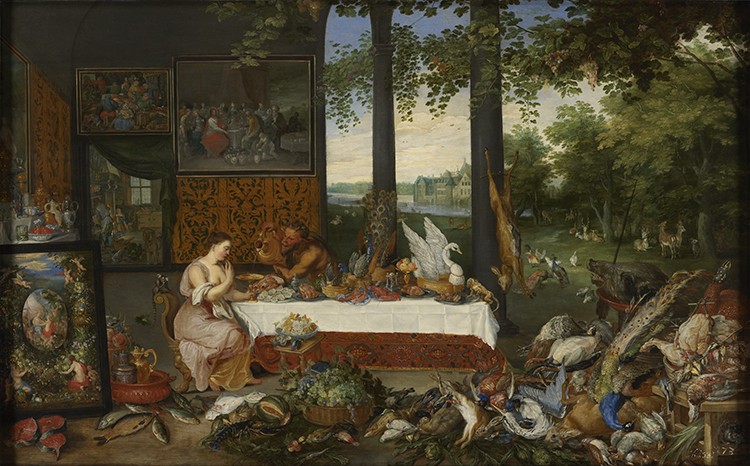One gallery in Seeing Nature is dedicated to Jan Brueghel the Younger’s The Five Senses series. Painted in 1625, this series is a close copy of five paintings by Brueghel’s father, Jan Brueghel the Elder (who painted the backgrounds) and Peter Paul Rubens (who painted the figures) in 1617–18, now in the Museo del Prado in Madrid. Each painting focuses on one of the five senses, providing a platform for visitors to consider their own encounters with nature. Today we focus on Taste.

Jan Brueghel the Younger, The Five Senses: Taste, c. 1625. Oil on panel, 27 5/8 x 44 5/8 in. Paul G. Allen Family Collection
In Taste, as in Smell, Brueghel addresses a faculty associated more with the body than the mind. The personification’s dull concentration on satisfying her appetite makes this catalogue of edibles—dead game, seafood, fruit, pastries, and wine—a cautionary image of gluttony, one of the seven deadly sins.
Designed to give lasting, edifying pleasure to its owners, The Five Senses could be appreciated on numerous levels: a celebration of the wealth that rewarded enlightened governance; a series of moral lessons about human behavior; an inventory of every type of natural flora and fauna and manufactured object, both domestic and international; and a display of artistic skill and ingenuity.
